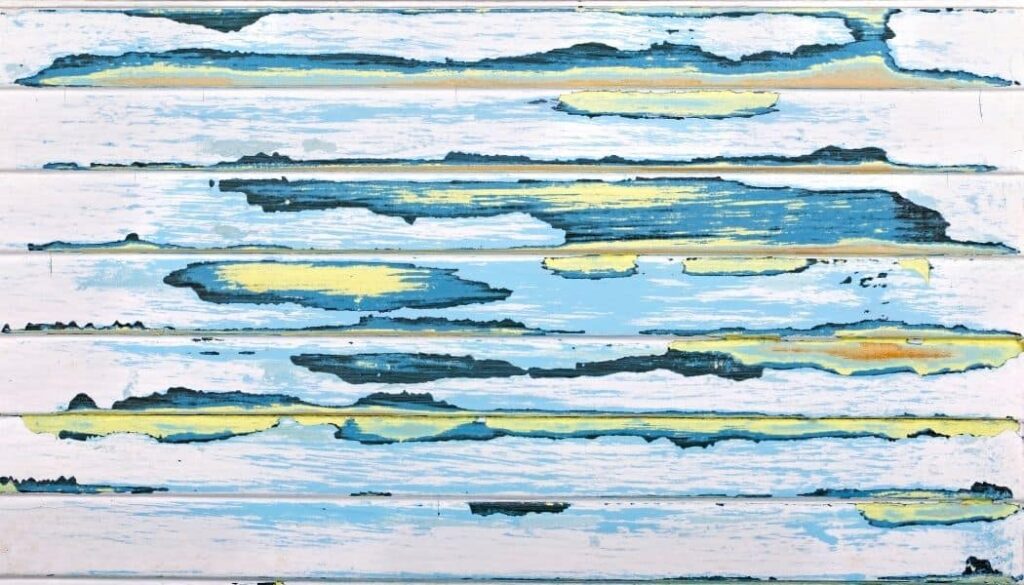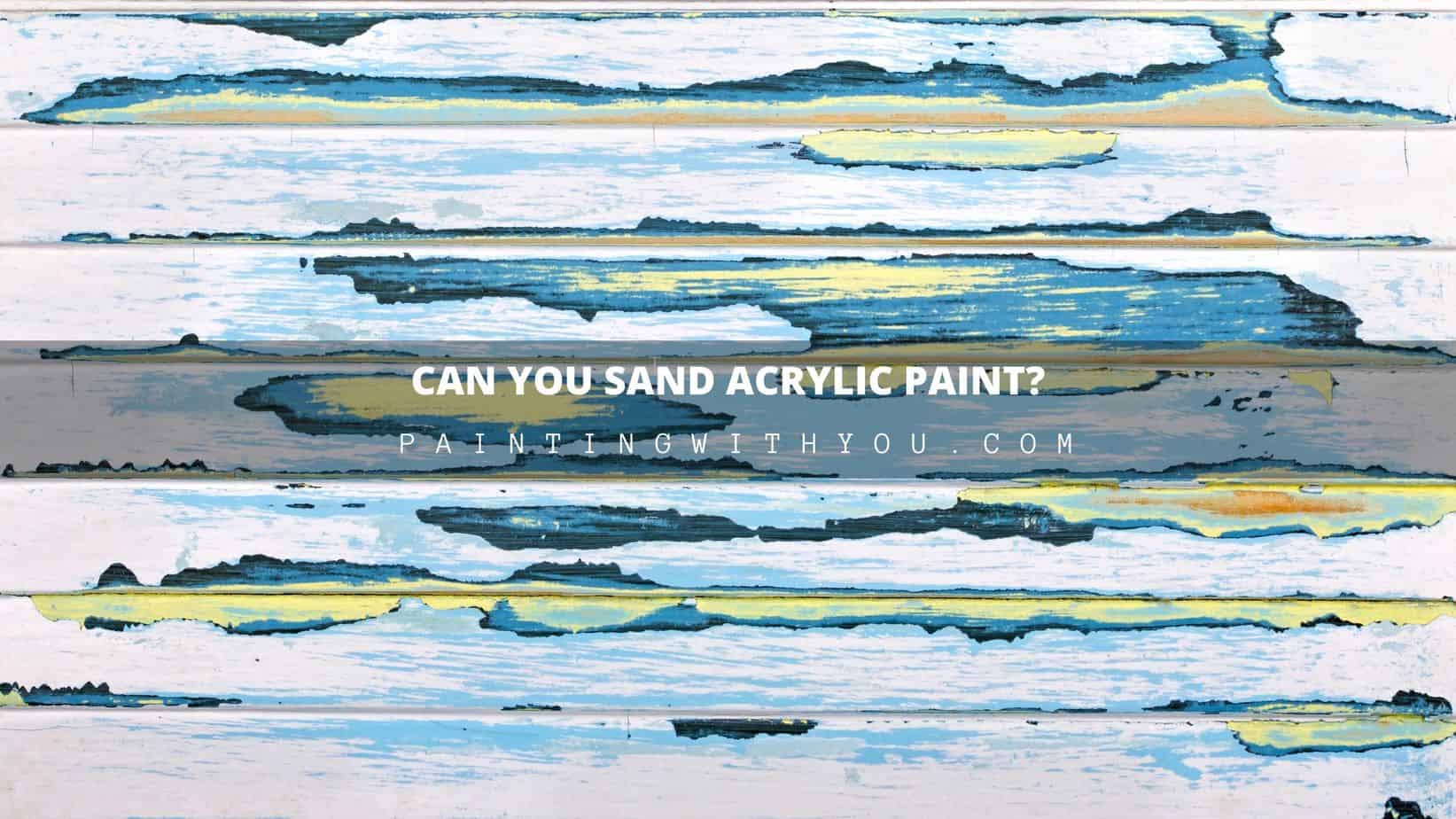There are many different reasons why someone might want to sand acrylic paint, and it is perfectly fine to do so as long as it’s done correctly. You don’t want to create a perfect piece, go to sand areas that you may want to clean up or change, and ruin the entire thing!
It’s a technique that is easy to mimic, but also easy to mess up if you don’t know what you’re doing.
It’s important to know not just the variety of options you have when sanding acrylic paint, but also how to do it and on what surfaces it may be suitable. Doing the proper research can save you the time and energy that went into the project, and from having to scrap an entire piece due to making a simple mistake.

Can you sand acrylic paint?
You can sand acrylic paint but it depends on the surface you’re sanding, the sandpaper grit you’re using, and the technique you use.
When you want to repair a mistake, texturize, or add effects, sanding acrylic paint can be a very useful tool when done correctly. It’s necessary to note that before sanding any acrylic paint, you must make sure that it is cured, which is essentially just giving the paint to dry all the way through rather than just on the surface.
Which surfaces are appropriate for sending?
Acrylic paints can be sanded that is applied to wood, metal, and plexiglass (in this case, you would have to sand it before you painted it) as well as acrylic gesso primers.
Any time you sand acrylic paint you should take precautions. You can keep sanding bit by bit until you’re happy, but if you sand an area too much, there’s no going back.
You don’t want to use sandpaper that is too fine and will make it harder to reach your end goal, but you also don’t want sandpaper that is too coarse and lead to the potential of a ruined piece. The different sandpaper grit options as well as what they do will be explained further along. I like to use 240 Grit Poliwell sandpaper.
How Do You Sand Acrylic Paint?
If you’d like to smooth out bumps or achieve any desired effect, sanding acrylic paint will come in handy. Let’s discover some great how-to tips:
- When sanding your canvas, stick your hand out on the opposite side and press at the same time.
- Make sure you give your acrylic paint enough time to cure so you don’t sand prematurely and ruin the acrylic.
- Primer your canvas or any surface properly to ensure mistakes won’t happen
- If you decide to sand between each layer of acrylic paint, make sure you don’t consume the dust.
- For any splotchy areas on your acrylic, you might need to consider filling in the grooves rather than sanding them down straight away. If, however, you are not concerned about over-sanding or splotchy marks, this tip might not apply to you.
- You should not buy too rough sandpaper because it can ruin your painting. My favorite grit is 240, which I believe suits my needs just fine.
- Sweep it with circular motions until you get a nice smooth finish.
- Cover your sanded area with new layers of acrylic painting so you are satisfied with result and overall look.
- Seal your painting so it gives your piece the extra protection of not being chipped, scuffed, or scratched. It also provides you that glossy or matte look.
Here is a great video by the Acrylic Pouring channel on this topic if you prefer video format:
The Importance of Using a Primer
When it comes to individual artwork, a lot of the desired results will depend on the steps you take beforehand. For example: Whether or not you use a primer. Talking in a general sense, gesso (an acrylic paint primer) isn’t necessary; but if you want a smoothed out and even surface, gesso technically is necessary.
Using a primer also prevents acrylic paint from “sinking into” any surface, specifically a canvas. A painting that is correctly primed will prevent a lot of mistakes from occurring in the future.
Should I Sand In Between Coats of Paint?
Sanding helps eliminate any unwanted texturization. Depending on your end goal, sanding in between coats of paint is totally up to personal discretion. A popular term about either purposely or accidentally applying thick layers to a piece is called impasto, which essentially just means adding visible strokes and visible texture.
Whether or not you choose to use the impasto technique, sanding between coats can still help with any imperfections. It will ensure an all-around smoother and more cleaned-up result.
TIP: Slightly wet the (dried) acrylic before sanding so you don’t inhale any of the harmful dust.
What Grit Sandpaper Should I Use Between Coats?
A good way to predetermine if you’re using the right grit or not is to understand the numerical scale of sandpaper. If you get a lower number, you will receive a more coarse grit and remove acrylic paint quicker. In terms of sanding acrylic paint, this isn’t necessarily good as you need a slow and steady momentum, therefore you won’t need coarse sandpaper.
As the number increases, the sandpaper will become finer. There is an assumption that finer sandpaper can lead to a longer project period, but it is better to be safe than sorry but at the same time you can work up to whatever texture or result you desire.
Medium grit sandpaper
For acrylic paint, normally I use finer sandpaper. Occasionally, medium grit (scaled from 100 to 150 numerically) may be better. For Example – I would use it to correct larger imperfections or sanding gesso primer.
Fine grit sandpaper
Sandpaper between 180 and 240 grit, which is considered fine-grit, is my favorite. I often use it for sanding between coats of paint, removing unwanted textures, creating some texture, etc…
Very Fine grit sandpaper
Everything above 320 grit is considered very fine or ultra-fine grit sandpaper. This is the sandpaper you would use for pre-sanding a surface such as metal. Or in other cases, this sandpaper can be used to sand between coats of finish leading to that more “glossy smooth”. I like to use it to repair really small bumps in paint texture maybe in some delicate places on my painting.

